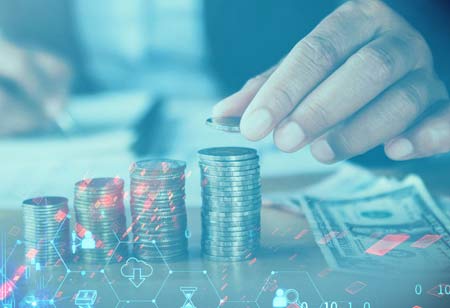THANK YOU FOR SUBSCRIBING
Be first to read the latest tech news, Industry Leader's Insights, and CIO interviews of medium and large enterprises exclusively from CFO Tech Outlook
THANK YOU FOR SUBSCRIBING

By
CFO Tech Outlook | Wednesday, April 20, 2022
Stay ahead of the industry with exclusive feature stories on the top companies, expert insights and the latest news delivered straight to your inbox. Subscribe today.
Keep in mind that your total net salary is the take-home amount remaining after all deductions and withholdings. Therefore, once you are clear about the sum of money you will have coming in, you can calculate how much money will be left for spending.
Fremont, CA: Consumer demands are constantly changing. The onset of the COVID-19 pandemic has propelled the shift from physical shopping to online shopping. Many businesses started the contactless method of payments to ensure the safety of consumers. Thus, consumer demand for digital financial services began to soar.
Many financial services seized this opportunity and started implementing digital solutions to ensure quicker, easier and contactless methods for users to manage their finances. A recent study shows that 97 percent of financial service firms have begun making moves towards digital transformation.
In this article, we are giving away some effective tips to help you manage your finances in a cashless future:
Know Your Spending Power
In order to make effective budget plans, you need to understand your total net salary. Keep in mind that your total net salary is the take-home amount remaining after all deductions and withholdings. Once you are clear about the sum of money you will have coming in, you can calculate how much money will be left for spending.
Budgeting apps like Digit, Mint, Qapital, and Chime are all options for those seeking an easy way to start saving.
Tracking Your Expenses
The next step is tracking your expenses. Personal expenses come under three main buckets: fixed, periodic, and variable expenses. A fixed expense must not change and include bills like rent or mortgages, car payments, and monthly prescription prices. Period expenses include bills that are paid regularly but happen on a quarterly or annual basis, like a major car repair or a vehicle registration. On the other end of the spectrum of fixed expenses are variable expenses. These "unforeseen expenses" happen month-to-month, but the amount may change, such as groceries, utility bills and so on.
I agree We use cookies on this website to enhance your user experience. By clicking any link on this page you are giving your consent for us to set cookies. More info

However, if you would like to share the information in this article, you may use the link below:
www.cfotechoutlookeurope.com/news/simple-tips-to-reap-financial-success-in-2022-nid-1803.html



